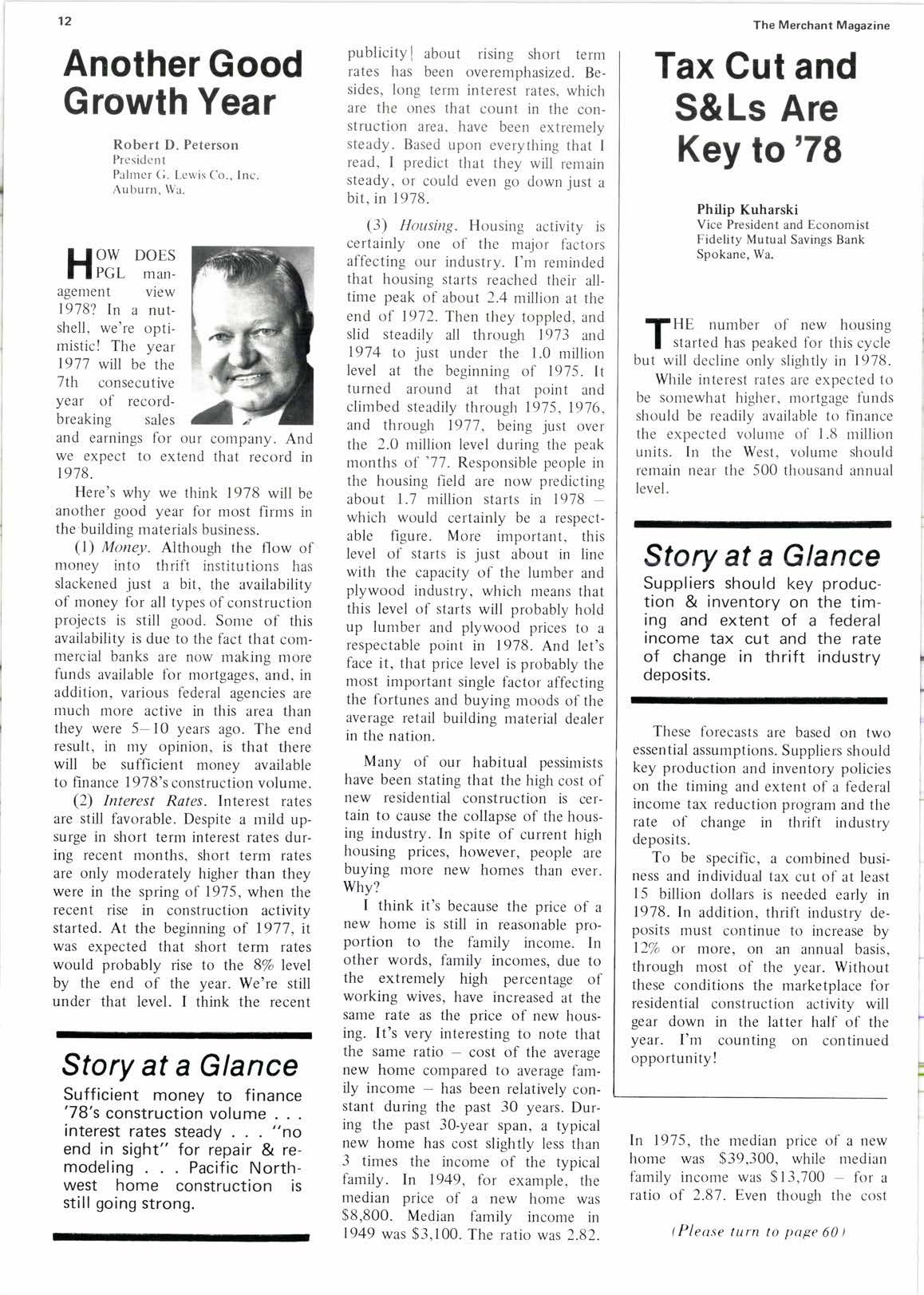
2 minute read
i,i.rot* "';;;
- and earnings for our company. And we expect to extend that record in 1978.
Here's why we think 1978 will be another good year for most firms in the building materials business.
(l) Money. Although the flow of money into thrift institutions has slackened just a bit, the availability of money for all types of construction projects is still good. Some of this availability is due to the fact that commercial banks are now making more funds available for mortgages, and, in addition, various federal agencies are much more active in this area than they were 5-10 years ago. The end result, in my opinion, is that there will be sufficient money available to finance 1978's construction volume.
(2) Interest Rates. lnlerest rates are still favorable. Despite a mild upsurge in short term interest rates during recent months, short term rates are only moderately higher than they were in the spring of 1975, when the recent rise in construction activity started. At the beginning of 1977, it was expected that short term rates would probably rise to the 8% level by the end of the year. We're still under that level. I think the recent
Story at a Glance
Suff icient publicity I about rising short term rates has been overemphasized. Besides, long term interest rates, which are the ones that count in the construction area, have been extremely steady. Based upon everything that I read, I predict that they will remain steady, or could even go down just a bit, in 1978.
(3) Housing. Housing activity is certainly one of the major factors affecting our industry. I'm reminded that housing starts reached their alltime peak of about 2.4 million at the end of 1972. Then they toppled, and slid steadily all through 1973 and 1974 to just under the 1.0 million level at the beginning of 1975. It turned around at that point and climbed steadily through 1975, 1916, and through 1977, being just over the 2.0 million level during the peak months of '71 . Responsible people in the housing field are now predicting about 1.7 million starts in 1978which would certainly be a respectable figure. More important, this level of starts is just about in line with the capacity of the lumber and plywood industry, which means that this level of starts will probably hold up lumber and plywood prices to a respectable point in 1978. And let's face it, that price level is probably the most important single factor affecting the fortunes and buying moods of the average retail building material dealer in the nation.
Many of our habitual pessimists have been stating that the high cost of new residential construction is certain to cause the collapse of the housing industry. In spite of current high housing prices, however, people are buying more new homes than ever. whv?
I think it's because the price of a new home is still in reasonable proportion to the family income. In other words, family incomes, due to the extremely high percentage of working wives, have increased at the same rate as the price of new housing. It's very interesting to note that the same ratio - cost of the average new home compared to average family income - has been relatively constant during the past 30 years. During the past 30-year span, a typical new home has cost slightly less than 3 times the income of the typical family. In 1949, for example, the median price of a new home was $8,800. Median family income in 1949 was $3.100. The ratio was 2.82.

![HTNffiIHt ONt NATIONAT TUTNIIHAIGAN HI1PYOU EAINA BISEM SHAff OTIHT NrcH IO{I-YOUNSH] MARKTI](https://assets.isu.pub/document-structure/230727160305-f0cee76c8a861d0078a09172e6c764af/v1/9569d4286fe9d100664f01a230a713f3.jpeg)








